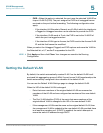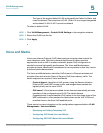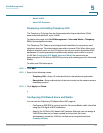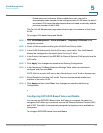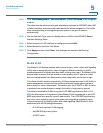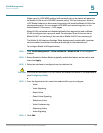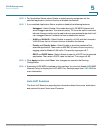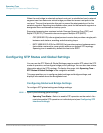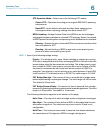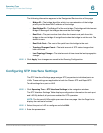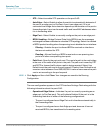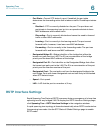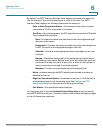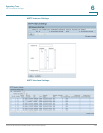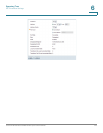
Spanning Tree
Configuring STP Status and Global Settings
Cisco Small Business SG200 Series 8-port Smart Switch 119
6
When the root bridge is selected and each root port is established, each network
segment can then determine which bridge provides the lowest cost path to the
root port. The port that provides this path is named the designated port for the
network segment. Spanning tree disables other ports for that network segment or
designates them as alternate or backup ports.
Supported spanning tree versions include Common Spanning Tree (CST) and
Rapid STP (RSTP). This switch does not support Multiple STP (MSTP).
• CST (IEEE 802.1D) is the original protocol version that provides a single path
between end stations, avoiding and eliminating loops.
• RSTP (IEEE 802.1D-2004 or IEEE 802.1w) provides protocol enhancements
that enable a network to more quickly achieve an optimal STP topology.
Spanning tree is enabled by default and set to be RSTP.
Configuring STP Status and Global Settings
You can use the STP Status & Global Settings page to enable STP, select the STP
mode of operation, and configure bridge priority settings. You can also view status
information about the STP topology. To display this page, click Spanning Tree >
STP Status & Global Settings in the navigation window.
This page enables you to configure global settings and bridge settings, and
displays information about the designated root.
Configuring Global and Bridge Settings
To configure STP global settings and bridge settings:
STEP 1 Specify the following global settings:
• Spanning Tree State—Select to enable STP operation on the switch. You
must also enable STP operation on individual ports (see Configuring STP
Interface Settings).



